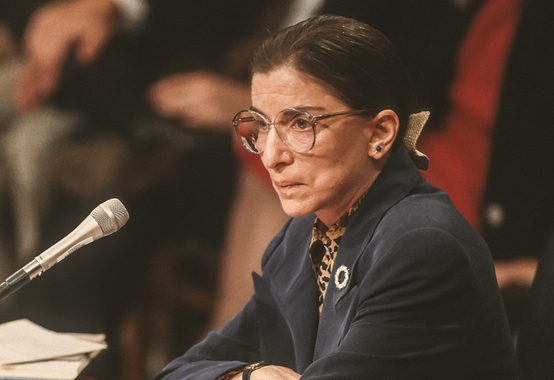Justice Ruth Bader Ginsburg Dies, Shaking 2020 Race

Supreme Court Justice Ruth Bader Ginsburg died Friday, at 87.
“Our nation has lost a jurist of historic stature,” Chief Justice John Roberts said in a statement. The Court said Ginsburg died of metastatic pancreatic cancer. Ginsburg was appointed by President Bill Clinton, a Democrat, in 1993, and then served twenty-seven years on the nation’s top bench.
In that time, she became an icon for the nation’s liberals, and the second woman in American history to serve in such a post. Born and reared in Brooklyn, Ginsburg died in Washington. Her husband, prominent taxation lawyer Martin Ginsburg, died in 2010.
Her passing comes as the United States grapples with a quartet of crises: the global pandemic, recovery from an economic collapse, a national reckoning on race relations and an upcoming presidential election on the divisive and revolutionary presidency of Donald Trump. It has already been a bizarre campaign in which traditional retail politics has been officially discouraged. Nonetheless, the contest, in which Trump presently trails, is now certain to reach a fever pitch.
The death gives Trump and Senate Majority Mitch McConnell the opportunity to appoint her replacement.
The news of her passing came live as the president was speaking in Minnesota, and he was seemingly unaware of the development. It is unclear whether the White House and McConnell would try to rush through an appointment before the November 3 general election — or the “lame duck” Senate session right after — or, instead, make the matter the very center of the election, with promises to appoint a genuine conservative (and likely a woman), if Trump triumphs.
Early voting and mail-in voting are already under way in part of the United States.
McConnell has drawn fire in recent years for his kiboshing of Barack Obama’s appointment of Merrick Garland late in the forty-fourth president’s second term. He used the justification that appointments shouldn’t be made so late in a term, and the decision instead left to the American people. The seat ultimately went to Neil Gorusch, a Trump appointee, in 2017. If McConnell and company tried to strongarm an appointment now, their contingent would doubtless draw howls of hypocrisy.
But history is on the line. Gorsuch replaced Antonin Scalia, a conservative, and Trump’s second pick Brett Kavanaugh replaced Anthony Kennedy, a centrist. Trump now has the opportunity to swap Ginsburg, a dyed-in-the-wool progressive, with a figure who could potentially overturn Roe v. Wade, which largely federalized American abortion rights in the 1970’s. Abortion rights of some sort retain majority support in most public opinion polls but the decision to essentially remove the matter from voters’ hands remains deeply controversial.
As the U.S. Congress has waned in power in recent years, and as successive presidents have confronted gridlock, the Supreme Court has increasingly been seen as the crucible of American politics. In recent months — as a result of votes by Gorsuch and Roberts (both Republican appointees) seen as too moderate by many in the president’s base — pressure has mounted from Trump’s right flank.
Aspirant heirs to Trump have increasingly taken a hard line, particularly on abortion. Sen. Tom Cotton said explicitly last month that it was time to overturn Roe and Sen. Josh Hawley, the upper chamber’s youngest member, went further, saying he would not vote for a nominee who did not make an anti-Roe commitment.
Hawley’s move broke a taboo in Washington: against so-called, explicit “litmus tests” for Court nominees, which have been traditionally discouraged. Hawley’s decree could potentially be a problem for the White House and McConnell’s office, which may have the ambition to overturn Roe, but likely will want to play this game closer to the chest.
Ginsburg’s death comes days after Trump announced a new list of attorneys from which he would select a justice. This list actually included both Hawley and Cotton. But Washington observers generally have viewed Ginsburg’s likely successor to be a woman, especially if the pick falls to a Republican president, as it now does, and especially as Trump has previously selected two men. The appointment would also come in an era in which talk (especially among liberals) of impeaching justices, or adding slots to the bench (a proposal quashed under President Franklin Roosevelt), has become more routine.
Amy Coney Barrett, 48, was a runner-up the last time Trump made a selection; she currently serves on the United States Court of Appeals for the Seventh Circuit. The lower rungs of the federal bench are breeding grounds for future justices, with all but one (Elena Kagan) of the current members of the Court hailing from one of the circuits.
If Trump were to appoint a figure such as Barrett before the election, unquestionably energizing his base, he would throw her into the spotlight like no appointee in history, even surpassing the national spectacle that was the Kavanaugh appointment. The election, already fraught and contentious, would become a referendum on the appointment itself as much as the two candidates.
Comments